|
Poil posted:There's just something about Trainfever that makes it not particularly fun, I was a bit disappointed with it. Another problem is that primary industries don't really produce unless they have someone to send stuff to. Which makes sense I suppose, but it makes it really hard to set up a route. I do like how people and goods can be transferred by walking around though - not only for the competition aspect, but also because it's pretty much the only way to prime the pump at said industries. The towns are nice, with their different residential/commercial/industrial/leisure zones, and the bus and tram routes are neat. Some of the music is great, too. It has its moments but yeah, the trains are prohibitively expensive to run. Fun LP by the way. If any British steam locos get invented I might pop in and say a bit about them, they're sort of my speciality (though I'll keep quiet until they appear). Paul.Power fucked around with this message at 09:03 on Nov 8, 2015 |
|
|
|

|
| # ¿ May 10, 2024 02:04 |
|
Veloxyll posted:or for passengers Speaking of which, yay, first Brit train! 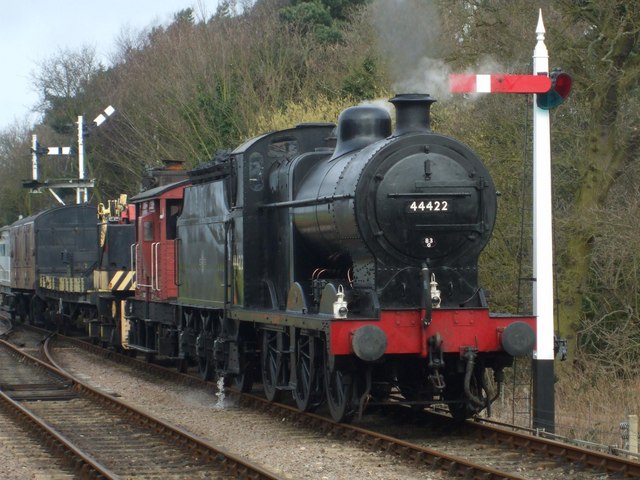 Sources: Wikipedia, geograph, Ashley Dace Fowler 4F Company: Midland Railway and later London, Midland and Scottish Railway (LMS) and British Railways (BR) Designer: Henry Fowler Wheel Arrangement: 0-6-0 First prototypes: 1911 First production models: 1917 (yeah, WWI kind of got in the way) Total built: 772 Total preserved: 4 The Fowler 4F was one of the better engines to come out of the Midland Railway's "small engine" policy - the theory that it would be more economical to build underpowered, cheap-to-maintain locomotives and double-head trains if necessary, in contrast to say Nigel Gresley's "big engine" policy over on what was then the Great Northern Railway (the Midland would be grouped into the LMS in 1923, as would the GNR into the LNER (London and North-Eastern Railway) - with Fowler and Gresley becoming the first Chief Mechanical Engineers (CME, "bloke wot designs the engines") of the LMS and LNER respectively. Ultimately, Gresley's big engine policy won out - Fowler tried his best with designs like the Royal Scot, but Midland's doctrine (carried over to the LMS) kept him limited in what he could achieve. It was only when William Stanier took over as CME of the LMS that they mounted a serious fightback. Saying that, the Fowlers did useful if unspectacular work as light freight locomotives, upgrading the Midland's previous batches of 0-6-0 goods engines, and they continued to fill a role even as Stanier's Black Fives and 2-8-0s brought more power to the LMS's lines (indeed, Stanier still managed to build 45 more of them during his time as CME). All 772 of the 4Fs made it to nationalisation, with withdrawals beginning in 1954 and finishing in 1966. Another fun fact about Fowler: he designed the "Jinty" 3F 0-6-0T of original Transport Tycoon fame, which is sort of the 4F's "counterpart" tank engine. Although that might be spoilers, depending on which locos Jaguars! uses. Paul.Power fucked around with this message at 09:50 on Dec 19, 2015 |
|
|
|
Jaguars! posted:The 4F is like the platonic ideal of what a steam loco looks like. If the railways themselves designed the locomotives, did they build them as well? And if they built 772 of them and never lost one, that's an incredible record. I did a lot research using the Wiki for NZ locomotives and half of them end up being lost in accidents, scrapped early or cannibalized for spare parts. Looking at Wikipedia articles, there were a few accidents - some of them fatal for the people involved - but apparently the locos involved were restored to working order.
|
|
|
|
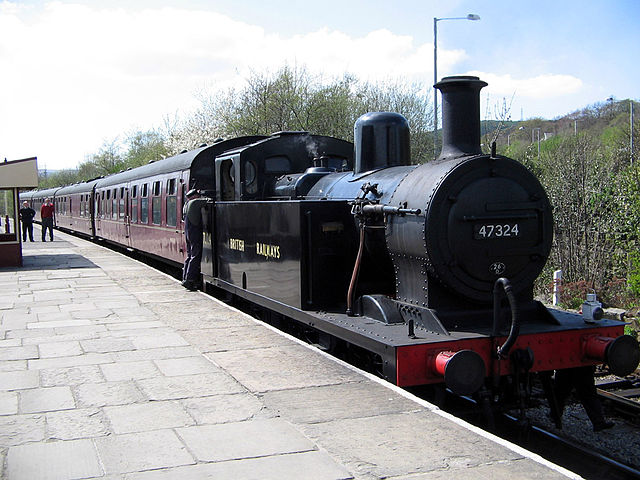 Sources: Wikipedia, G-Man Fowler 3F "Jinty" Company: London, Midland and Scottish Railway (LMS), and later British Railways (BR) Designer: Henry Fowler Wheel Arrangement: 0-6-0T First produced: 1924 (but based on earlier Midland designs, also known as Jinties sometimes) Total built: 422 Total preserved: 10 A simple, proven design for all of the LMS's unglamorous jobs - shunting, piloting, banking, local freight and passenger work, the Jinty was straightforward, easy to maintain and well-liked by crews. It was initially considered for use as Britain's standard shunting engine for World War 2, and eight of them would eventually find themselves enlisted into the War Department and sent off to France, but that role instead would go to Hunslet's Austerity design. Nevertheless, the Jinties lasted well into BR days, although eventually they were all sent for scrap by 1967. As previously discussed in the thread, the Jinty (also known as the "Chippie" in the scenario editor expansion) is famous in Transport Tycoon circles for being the first and cheapest (and cutest
|
|
|
|
Jaguars! posted:P.S. Paul, I love your little summaries, they're very pleasant to read.  . I crib a lot of my information from Peter Herring's Handbook of Classic British Steam Locomotives, if you're curious. . I crib a lot of my information from Peter Herring's Handbook of Classic British Steam Locomotives, if you're curious.Anyway, speaking of which, new Brit loco means new summary: 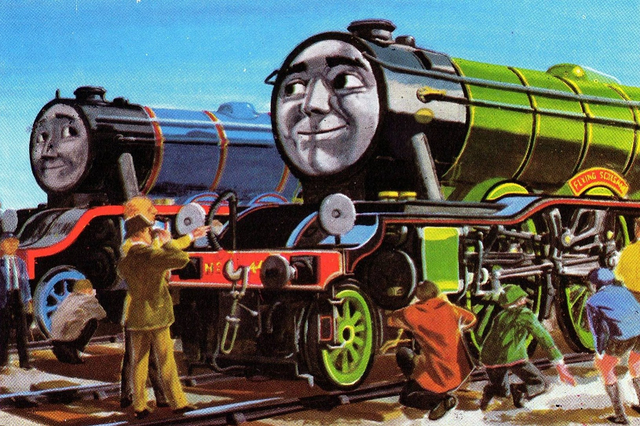 Sources: Wikipedia, Rich@rd, The Rev. W. Awdry, Gunvor and Peter Edwards Gresley A1/A3 Class Company: Great Northern Railway (GNR), and London and North Eastern Railway (LNER) and British Railways (BR) Designer: Nigel Gresley Wheel Arrangement: 4-6-2 First prototypes: 1922 First production models: 1923 Total built: 79 Total preserved: 1 (+ 1 fictional) I mentioned Nigel Gresley's "big engine" policy in contrast to the Midland Railway's "small engine" policy when writing up the Fowler 4F, and the A1/A3 class are a pretty clear example of that in action. The dual name comes from later examples being built with different valve gear and higher pressure boilers, gaining them the name A3: these changes came about because people (correctly) criticised the original A1s for consuming too much coal. Gresley disagreed at first, but was persuaded after a trial swap with a Great Western "Castle" Class showed just how much more coal-efficient the Castle was while performing to the same standards as the A1. The only (real  ) preserved member of the class is arguably the most famous steam locomotive in the world: Flying Scotsman, the first production model from the class and the first steam locomotive to achieve an authenticated 100mph (unauthenticated records having been set by New York Central and Hudson River Railroad's No. 999 and the Great Western's City of Truro). It has gone on many tours and changed hands several times throughout its long and chequered preservation-era career, but is currently owned by the National Railway Museum in York. Funnily enough, it actually returned to steam after a long overhaul only a few days ago, with tests beginning on the East Lancs Railway last Friday. The plan is to have it return to mainline action soon. ) preserved member of the class is arguably the most famous steam locomotive in the world: Flying Scotsman, the first production model from the class and the first steam locomotive to achieve an authenticated 100mph (unauthenticated records having been set by New York Central and Hudson River Railroad's No. 999 and the Great Western's City of Truro). It has gone on many tours and changed hands several times throughout its long and chequered preservation-era career, but is currently owned by the National Railway Museum in York. Funnily enough, it actually returned to steam after a long overhaul only a few days ago, with tests beginning on the East Lancs Railway last Friday. The plan is to have it return to mainline action soon.And of course, there's a famous fictional example of an A3: Gordon, from the Reverend W. Awdry's Railway Series (or, yes, fine, Thomas the Tank Engine). Gordon got to meet up with the last of his brothers during the events of Enterprising Engines. And now I feel even more nerdy...
|
|
|
|
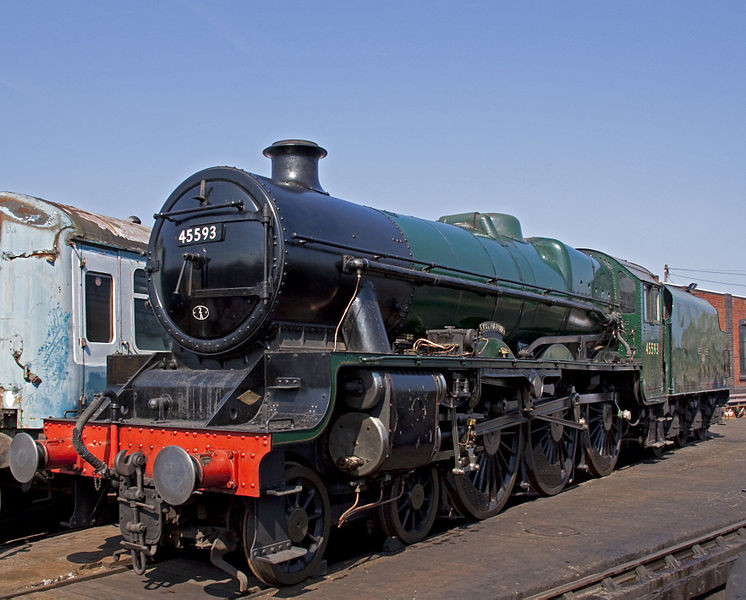 Sources: Wikipedia, Tony Hisgett Stanier Jubilee 5XP/6P Company: London, Midland and Scottish Railway (LMS), and later British Railways (BR) Designer: William Stanier Wheel Arrangement: 4-6-0 First produced: 1934 Total built: 191 Total preserved: 4 Until 1932, the LMS had been struggling to compete with their rival for services to Northern England and Scotland, Nigel Gresley's LNER. Henry Fowler had tried his best with locomotives such as the Royal Scot, but he was ultimately frustrated by the aforementioned "small engine policy". In 1932 though, everything changed: the LMS appointed William Stanier as their new Chief Mechanical Engineer, headhunting him from his role as Swindon Works Manager on the Great Western Railway. Stanier's job was nothing less than the complete restocking of the LMS's mainline fleet (the Fowler 4Fs and Jinties had the branch lines covered, at least), and the results can only be called a spectacular success. Not only did Stanier give the LMS a fleet to rival the LNER, he realised that, while speed and power were all very well, the coming decades would be just as much about reliability, adaptability, cost-effectiveness and ease of maintenance. The Jubilee class's role was secondary express passenger work on fast inter-city trips. Their initial designation was 5XP (power class 5 express passenger), after the Patriot class that they were based on, but this was eventually changed to 6P. As the Patriot was a proven design, and as there was a big need for the new engines, they were ordered without any prototyping. This turned out to be an error: generally sound Great Western design principles clashing with already-existing LMS concepts and the Jubilee's unusual (well, unless your name was Nigel Gresley) 3-cylinder layout led to teething troubles with the new engines, and over a hundred were built before they were fixed. After this was sorted, though, the Jubilees came in to their own. The name, incidentally, comes from the fact that the Jubilees were the class chosen to celebrate King George V's silver jubilee, with the engines named after places in the British Empire, war heroes and famous ships. The Jubilees are in some ways the underdogs of the Stanier locomotives. They weren't quite the box-office material of the Princess Royals and Princess Coronations, but nor did they have the sheer numbers (over 800 each) or railway enthusiast love of their close cousins, Stanier's "Black Five" mixed traffic engines* and his 8F heavy freight locomotives, although they did make it as far as 1967 before the last members of the class were withdrawn. But, like the Fowler Jinty, the Jubilee has another claim to fame as one of the locos featured in Transport Tycoon: and unlike the Jinty, it even made it to Transport Tycoon Deluxe as one of the three starting engines. So that faint bell ringing in the back of your head? It was probably that. * I know these are in Locomotion and I really hope Jaguars! added them to his scenario.
|
|
|
|
Jaguars! posted:Thanks as always Paul, it's interesting to see why the Brits build so many different locomotives as many of them around this time have almost identical in-game stats. I can't remember now if the black 5 was included, I know the A4 missed out because the stats were identical to the A3 and that style of streamlining was never used in NZ. Sometimes it's just about prestige: in some ways, the Great Western King class were a publicity stunt, because for all their power there wasn't much they could do that a Castle class couldn't, and their power came at a heavy cost in terms of weight and axle-loading. Meanwhile, their unsung Hall class would leave the biggest legacy of all by being the first true mixed-traffic locomotive, that would inspire William Stanier to make the Black Five when he transferred from the GWR to the LMS. Mixed-traffic designs continued to catch on, until by the time BR's Standard Classes came along, all but three of the designs were built for mixed traffic (and even then, one of those three is a weird outlier - with a curious connection to Transport Tycoon...). The fourth of the Collett 4-6-0s, the Manor, was another mixed-traffic loco specifically designed with low axle-loading in mind, to run on secondary routes. Shame to miss out on the A4, although I've always kind of preferred the LMS's stuff (although the V2 is an interesting Gresley engine) and I can definitely understand the point about streamlining. I'll just have to keep my fingers crossed for the Black Five, although it won't be the end of the world if it's not there  . .
|
|
|
|
Oh wow, three new BritTrains in one update. They're all cool ones though, so I'll get on to them as soon as I can.
|
|
|
|
 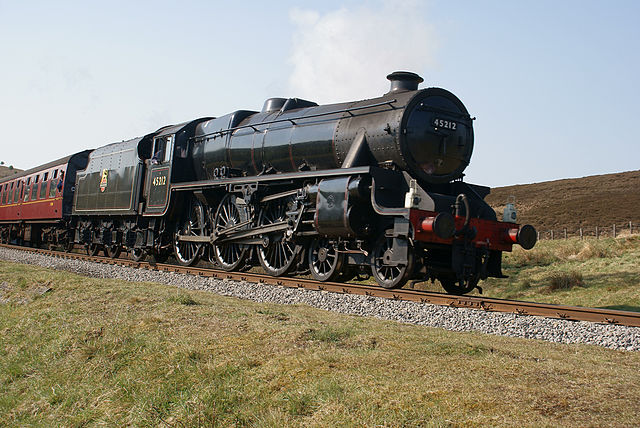 Sources: myself, Wikipedia, cooldudeandy01, The Rev W. Awdry, C. Reginald Dalby. Stanier Black Five 5P5F/5MT Company: London, Midland and Scottish Railway (LMS), and later British Railways (BR) Designer: William Stanier Wheel Arrangement: 4-6-0 First produced: 1934 Total built: 842(!) Total preserved: 18 (+ 1 fictional) Eight hundred and forty two. Only three other British locos beat that total: number 3 is Stanier's 8F heavy freight class, which topped out at 852, chiefly because of its use as the standard engine of choice during the first half of World War 2. Number 2 is the 863 examples of the GWR's 57xx class, which TT veterans will recognise as the Collett Pannier Tank (or possibly Kirby Paul Tank) - you know, the one that's like a Jinty but slightly better. Number 1 is the 957 DX Class 0-6-0 goods engines of the London and North Western Railway, all of which were sadly scrapped. Either way, 842 is still a heck of a lot of locomotives. So let's talk about them. Superficially, the Black Five looks very similar to the Jubilee: same wheel arrangement, same general shape. There are a few differences: the Black Five was a little lighter than the Jubilee, had a slightly lower boiler pressure, only two cylinders instead of three, and smaller driving wheels. The smaller driving wheels in particular are of interest, because throughout the history of loco design there's a general rule of thumb: passenger engines have fewer, bigger driving wheels, freight engines have more, smaller driving wheels. Mechanically, this translates into more speed for the passenger engines, and more driving force for the freight engines. Of course, the Black Five's wheel's are in between - because they are mixed traffic engines. The mixed traffic engine was a fairly new concept at the time, introduced with the GWR's "Hall" class, but the general concept is of a locomotive that can do anything - barring particularly express passenger (although the Black Five could still top out at around 90mph) or heavy freight work - and, ideally, go anywhere - which, with decent weight, length and axle loadings, the Black Five could also handle. They were really useful engines. That's why there were 842 of them, with production continuing into BR days. And speaking of Really Useful Engines...  . Well, I already did it for Gordon, so Henry deserves his spot in the sun too. Not that he started life as a Black Five. No-one's quite sure what he started life as, except possibly a nuisance. But following his accident with The Flying Kipper (look it was a train that transported fish, all right), he got sent to Crewe (the LMS's main locomotive depot, which produced many Black Fives itself) for a rebuild and emerged as something that was mostly a Black Five. . Well, I already did it for Gordon, so Henry deserves his spot in the sun too. Not that he started life as a Black Five. No-one's quite sure what he started life as, except possibly a nuisance. But following his accident with The Flying Kipper (look it was a train that transported fish, all right), he got sent to Crewe (the LMS's main locomotive depot, which produced many Black Fives itself) for a rebuild and emerged as something that was mostly a Black Five.The real world reason for this? C. Reginald Dalby, the illustrator of the first eleven Railway Series books, was - while a genius at backgrounds and nice, clean lines - kind of bad at drawing at consistently drawing trains. Yeah, bit of a drawback in his job. Henry in particular spent way too much time looking like Gordon, not least because in books 2 though 5, he was coloured blue. Returning him to green livery and giving him a new shape was the Rev W. Awdry's plan to help differentiate Henry from Gordon. Ultimately, relations between Awdry and Dalby broke down enough that Dalby left and John T. Kenny came in as the new illustrator for books twelve to seventeen - he may not have been as good at backgrounds as Dalby, but his engine-drawing ability and working relationship with Awdry were much better. Anyway, yeah. Black Fives. A "deuce of a good engine", as Stanier himself described them, and some of them soldiered on to the end of BR's steam traction in 1968, pulling the "15-guinea" specials that marked the end. 18 of the 842 survived into preservation, and 13 of those have seen work since then. Paul.Power fucked around with this message at 20:26 on Feb 3, 2016 |
|
|
|
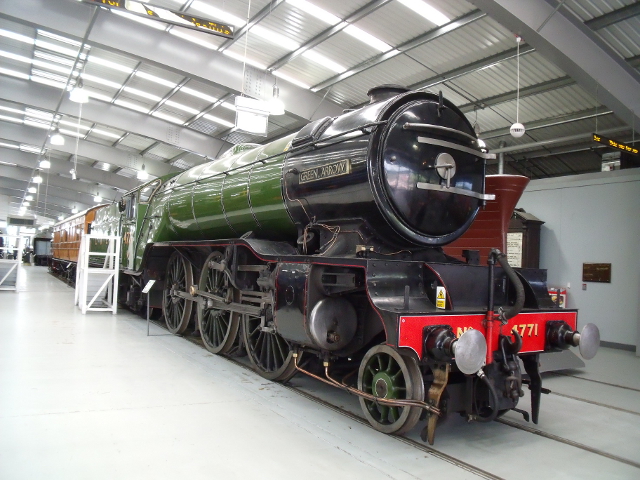 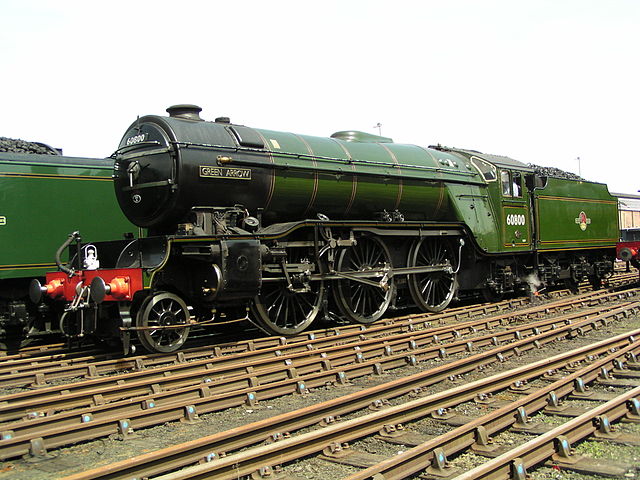 Sources: myself, Wikipedia, Our Phellap Gresley V2 6MT Company: London and North Eastern Railway (LNER), and later British Railways (BR) Designer: Nigel Gresley Wheel Arrangement: 2-6-2 First produced: 1936 Total built: 184 Total preserved: 1 A fast mixed freight service (arguably the predecessor of modern container freight) from London to Scotland was proposed, but locomotives were needed to pull it. The A3 class could have handled the job, but they were all tied up with passenger duties. Enter the V2 class, Nigel Gresley's final major design for the LNER (1936 was his 25th year as a Chief Mechanical Engineer), and, some would argue, his masterpiece (bearing in mind this is the guy who designed Mallard). The freight service would be called Green Arrow, a name also applied to the first locomotive in the V2 class. The V2's wheelbase was unusual - 2-6-2 not being common for tender engines in the UK - but it was ultimately a smaller version of the A3, still keeping Gresley's trademark 3-cylinder layout. Although designed for fast freight, the locos soon found themselves deputising for A3s and A4s on express routes and even managing break 100mph on a test train one time. Like the Black Fives, the V2s were "do anything" locomotives - and faster and more powerful than them, as well. Unlike the Black Fives, they were not "go anywhere" locos though - their extra power came at the cost of very high axle-loadings that barred them from the majority of the LNER's routes. In some respects, their role was more similar to Jubilees than Black Fives, despite officially being mixed traffic locos. They still proved their worth though, performing remarkable feats of endurance during World War 2, hauling trains of over 20 vehicles and 700 tons, and permitting their continued construction through the War until 1944. They performed equally well on major inter-city routes under British Railways as well. Green Arrow is the sole survivor of the class, and is always a loco that makes me smile on visits to the National Railway Museum in York - maybe it's the nice green livery, maybe because it's a bit like Flying Scotsman with a bit less pomp and circumstance, I dunno. It's even a major character in Thomas and the Great Railway Show, being the first engine to make friends with Thomas on his visit to the NRM  . .
Paul.Power fucked around with this message at 23:18 on Feb 5, 2016 |
|
|
|
Oh boy, I'm falling behind. Still got to do a write-up on the Coronations, and now we have Standard 4 Tanks as well. Both are cool locos though, so I'll definitely get round to them soon. Funnily enough, as good a joke as "external combustion engine" is, it does have an actual meaning as well - steam engines are external combustion engines, because the combustion takes place outside the cylinders.
|
|
|
|
All right, let's get caught up on this.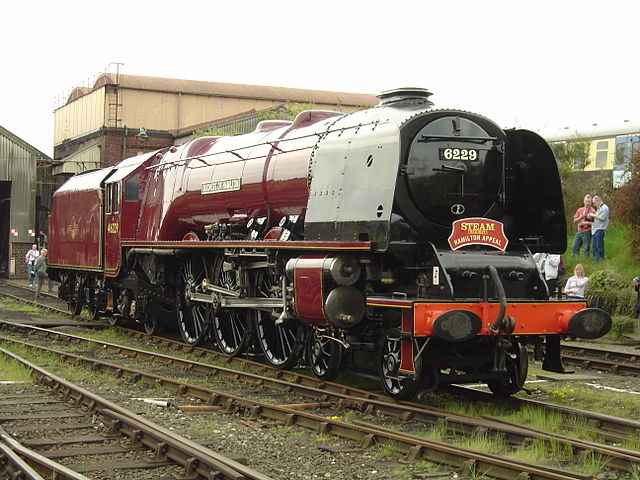 Credit: myself, Wikipedia, Optimist on the run Stanier "Princess Coronation" Class 8P Company: London and North Eastern Railway (LNER), and later British Railways (BR) Designer: William Stanier Wheel Arrangement: 4-6-2 First produced: 1937 Total built: 38 Total preserved: 3 You know, it's funny that Jaguars! said he didn't include the A4 in his scenario because streamlining never took off in New Zealand, because guess how a number of the Coronation class locos started off life. The "Coronation Scot" service was the LMS's answer to the LNER's streamlined services, capable of travelling from London to Glasgow in six hours. And the Coronations themselves were Stanier's answer to Gresley's A4 class. The A4 may have ended up with the steam speed record, but the Coronations held it for a time, setting a record of 114mph in 1937. They also set a power record: 3,330hp being the highest cylinder horsepower set by a British steam locomotive. But then, setting new speed and power records was already beginning to feel a little childish in the years leading up to World War II - and once World War II started, any chance of setting new records went completely out of the window. High speed luxury expresses also fell by the wayside - but the Coronations' sheer pulling power allowed them to still be constructed during the war. Even if some of them came out streamlined in plain black! Between 1945 and 1949, all the streamlined casings of the Coronation classes were removed - however, over the last few years the National Railway Museum's Dunchess of Hamilton has been restored to its original streamlined condition. Paul.Power fucked around with this message at 10:47 on Mar 10, 2016 |
|
|
|
And double post because hey, why not._Bluebell_Railway_27_Sept_2010.jpg) Credits: myself, Wikipedia, Phillip Capper Standard 4MT Tank Company: British Railways (BR) Designer: Robert Riddles Wheel Arrangement: 2-6-4T First produced: 1951 Total built: 155 Total preserved: 15 The goal of the BR Standard classes was to provide a modern, standardised, economical and versatile steam locomotive fleet for British Railways - the logic being that it would be more economical to keep using steam (fired by local coal supplies) and gradually electrify the network rather than switch to diesel and expensive imported oil (note: this logic did not eventually get followed up on - more on that later). The leader of the design team was Robert Riddles, who had previously designed the War Department's "Austerity" locomotives, as well as working for the LMS. The LMS, thanks to the efforts of Stanier and his successors, were by now producing the best (in terms of simplicity and economy) locomotives of the Big Four, and most of the Standard classes took inspiration from LMS designs. The Standard classes ended up as something of a mixed bag. The Britannia 7P light pacifics did an excellent job of providing express power to regions like East Anglia, that couldn't support the axle-loadings of previous designs. The 9F heavy freight locomotives proved themselves to be masters of the gradients typical of the UK's coal and iron ore regions in Northern England and Wales. Some classes produced less spectacular results, like the Clan class 6Ps and the 3MTs - or the singular 8P Duke of Gloucester, which only proved its true potential in preservation (and of course, as the BR 8P/SH 8P in Transport Tycoon, the final and most advanced steam loco in that game). Others did reasonable jobs, but were simply slightly more modern versions of pre-existing locos, designed with extra convenience features and fitting into BR's new L1 loading gauge. The Standard 4 Tank fell sort of into that bracket as an evolution of a Stanier and Fairburn design (with a few small differences: the curved tanks were a requirement of the L1 gauge), but it still played an important role: chiefly suburban passenger work out of London, requiring fast acceleration and a fair turn of speed to cope with demanding start-stop schedules. Being a tank engine also helped with the fact that these suburban lines were essentially glorified branch lines, with no turntables. They were also seen on a variety of other branch lines around the country, filling useful roles. Unfortunately, the time of the Standard Classes would be all too short, as the Modernisation Plan of 1955 decided that switching to diesel would be the way to go after all Had the locomotives been phased out more normally, the railway preservation movement in the UK would be nowhere near as strong as it is, and there would probably be far fewer steam locomotives running around on preserved lines today (see also the Beeching cuts that resulted in the axing of many of Britain's branchlines - several of which would become ideal sites for preserved railways. It's weird to have mixed feelings about this stuff). Of particular note was Woodham Brothers' scrapyard in Barry, South Wales, where 213 locomotives were saved from scrap. Of the 16 largest preserved railway sites in the UK (not counting the National Railway Museum, presumably), 162 of their 262 steam locomotives came from Barry. Either way, the Standard Classes were a fitting way for steam traction in Britain to bow out.
|
|
|
|
Eh, Sprinters are okay. Pacers are awful though. Then again, the class 142 you just unlocked is a Pacer, so in a sense you were right first time  . .
|
|
|
|

|
| # ¿ May 10, 2024 02:04 |
|
Jaguars! posted:Everything is more exciting with the Main Theme! Ilustforponydeath posted:Still prefer the lesser-known amiga theme https://www.youtube.com/watch?v=eSHgwXF3WtI Even more so than the British steam locos  . .
|
|
|




